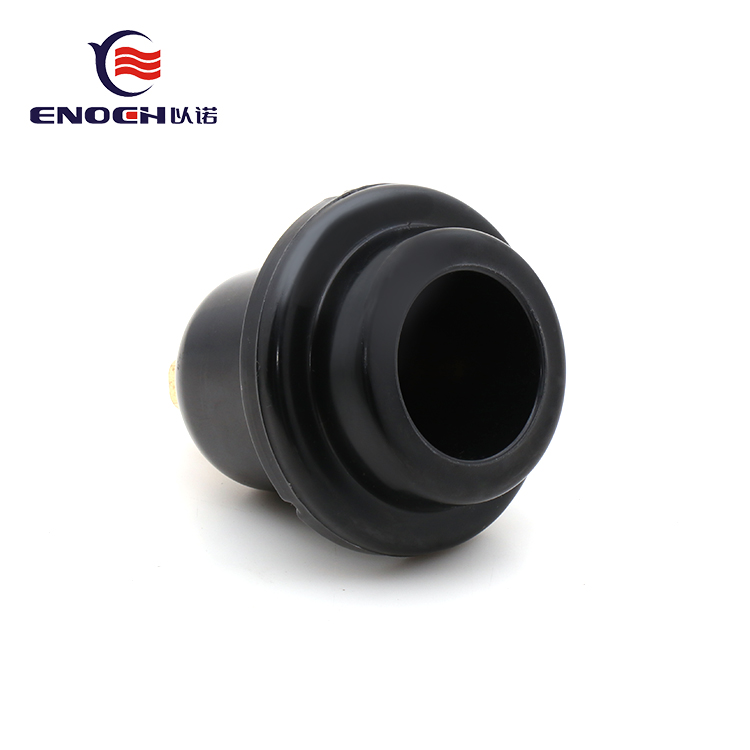Safeguarding Power: Exploring the Safety Features of the High Voltage Bushing Well
2024-01-23
Introduction:
In the realm of high-voltage systems, safety is paramount. The High Voltage Bushing Well serves as a critical component in ensuring the smooth transmission of power, but its operation within the context of electrical infrastructure demands a robust array of safety features. In this blog, we delve into the safety mechanisms incorporated into the High Voltage Bushing Well, unraveling the layers of protection designed to prevent electrical hazards and guarantee the well-being of personnel and equipment.
1. Arc-Resistant Design:
The High Voltage Bushing Well may feature an arc-resistant design, minimizing the risk of arcs and flashes during operation. This design mitigates the potential for electrical hazards, providing an added layer of safety in high-voltage environments.
2. Overcurrent Protection:
Overcurrent protection mechanisms are integrated into the bushing well to detect and respond to abnormal current conditions. These features safeguard against excessive currents that could lead to overheating and potential hazards, ensuring the well operates within safe parameters.
3. Fault Detection Systems:
Fault detection systems are employed to identify and locate faults within the electrical system connected to the bushing well. Rapid detection enables swift response and isolation of the faulty section, reducing the likelihood of extended electrical hazards.
4. Emergency Shutdown Controls:
Emergency shutdown controls allow for the immediate cessation of the well's operation in the event of an emergency. This rapid response capability is crucial in situations where the safety of personnel or equipment is at risk.
5. Insulation Monitoring:
Continuous insulation monitoring is a key safety feature. This system monitors the integrity of the insulation within the bushing well and promptly alerts operators to any potential breakdowns or compromised insulation, preventing electrical leakage.
6. Ground Fault Protection:
Ground fault protection mechanisms are in place to detect and respond to ground faults, reducing the risk of electrical shock or damage to connected equipment. Rapid intervention ensures a swift resolution to potential hazards.
7. Temperature Monitoring:
Temperature sensors are strategically placed within the bushing well to monitor temperature variations. If temperatures exceed safe thresholds, the system triggers alerts or automatically initiates measures to prevent overheating and potential electrical hazards.
8. Tamper-Resistant Design:
The bushing well may feature a tamper-resistant design to deter unauthorized access or tampering. Tamper-resistant features enhance the overall security of the well, reducing the risk of intentional disruptions that could lead to electrical hazards.
9. Visual Indicators and Alarms:
Visual indicators and alarms are incorporated to provide real-time feedback on the operational status of the bushing well. These indicators alert operators to any abnormal conditions, enabling timely response to potential hazards.
10. Isolation Mechanisms:
Isolation mechanisms within the bushing well facilitate the safe isolation of specific sections or components during maintenance or in the event of a fault. This ensures that personnel can work safely without exposure to live electrical components.
11. Corona Ring:
A corona ring may be part of the bushing well design to reduce the risk of corona discharge, a phenomenon that can lead to electrical losses and potential hazards. The corona ring helps control electric field gradients, minimizing the risk of corona-related issues.
12. Interlocking Systems:
Interlocking systems prevent certain operations or configurations that could lead to unsafe conditions. For example, interlocks may prevent the opening of access panels when the well is energized, enhancing the overall safety of maintenance activities.
13. Emergency Venting Systems:
Emergency venting systems are designed to release excess pressure in the event of internal faults or abnormal conditions. These systems prevent the buildup of pressure that could result in structural damage and subsequent hazards.
14. Clear Warning Signage:
Clear and standardized warning signage is an essential safety feature. Well-placed and easily understandable signage communicates potential hazards and safety protocols to personnel working in the vicinity of the High Voltage Bushing Well.
15. Compliance with Safety Standards:
The bushing well is designed and manufactured in compliance with industry safety standards and regulations. Adherence to established safety norms ensures that the well meets stringent safety criteria, providing users with confidence in its reliability and safety.
Conclusion:
The High Voltage Bushing Well, with its intricate safety features, stands as a fortress against potential electrical hazards in high-voltage environments. As we unravel the layers of protection, it becomes evident that each safety mechanism is a critical component of a comprehensive strategy to ensure the well-being of personnel and the longevity of electrical infrastructure. In the complex interplay between power and safety, the High Voltage Bushing Well emerges as a guardian, steadfast in its commitment to safeguarding power and lives.



